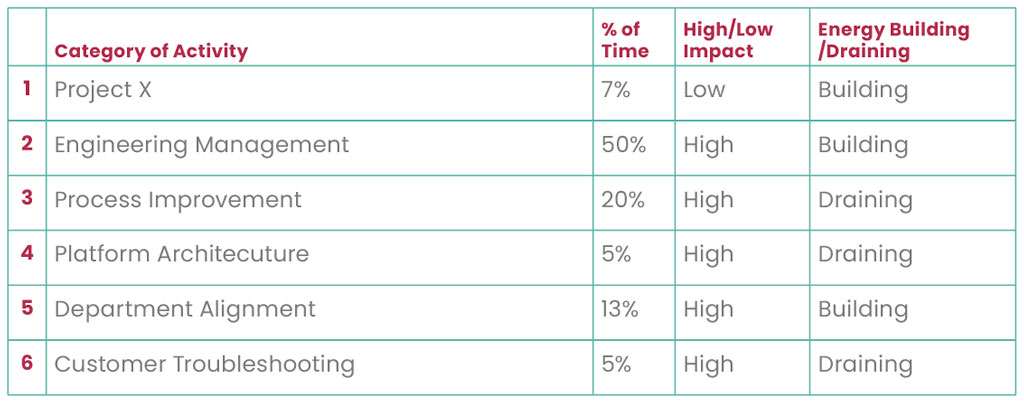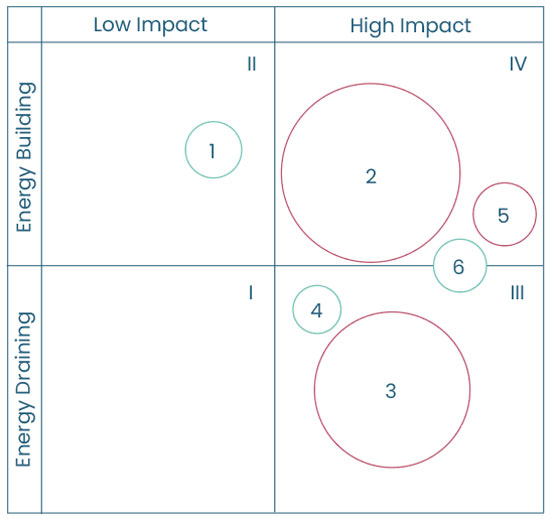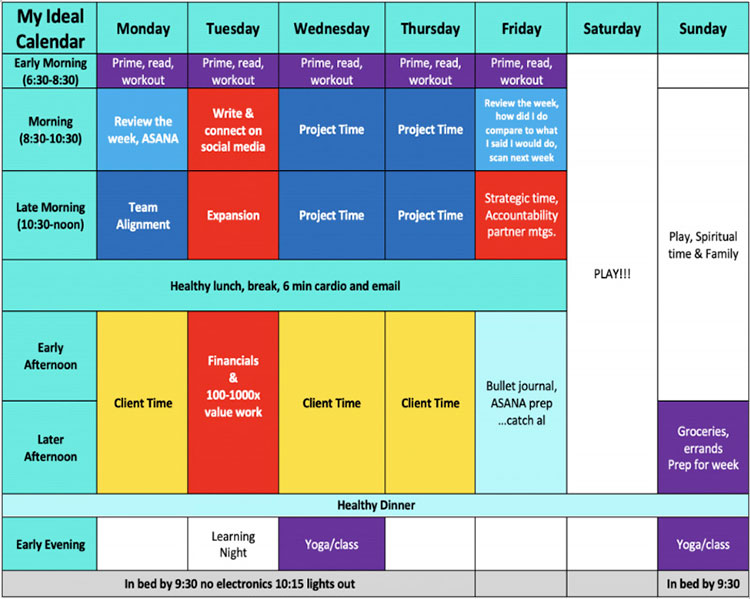As leaders, we juggle a multitude of responsibilities, and our schedules often feel like a constant battle against the clock. While staying busy might seem like a badge of honor, it can ultimately hinder our effectiveness and well-being. To truly thrive in our roles, we need to be intentional with our time, ensuring we’re focusing on activities that deliver the highest impact that only we can and should be doing.
The Leader’s Find Time Process™ is a framework designed to help you do just that. It goes beyond simply creating a schedule; it’s about optimizing your calendar to align with your unique priorities, energy levels, and natural rhythms.
This process consists of three key steps:
Step 1. Categorize Your Work
- Identify the key areas where your unique contribution is most valuable. These are high-impact activities that only you can do effectively.
- Assess your current time allocation: Reflect on the percentage of time you currently spend on each category.
- Evaluate the impact and energy level: Consider the impact each category has on your goals and whether it’s energizing or draining.

Step 2. Visualize Your Priorities
- Utilize a quadrant grid to map your work categories based on impact and energy level. This helps you visualize how your activities relate to each other and identify potential areas for improvement.
- Delegate strategically: Look for opportunities to delegate activities in quadrants I, II, and III to other team members who might be better suited for those tasks. Specifically if a task drains you, it may energize others. Who on your team may it be?. This frees up your time for higher-impact work.
- Identify and prioritize: Mark the activities that only you can and should do (e.g., strategic planning, leadership development) and add them to your priority list.

Step 3. Schedule for Success
- Consider your biorhythms. Reflect on your most productive times for different types of work. Schedule demanding tasks for when you have the most energy and focus, and less demanding tasks for times when your energy dips.
- Block out time slots. Treat essential activities the same way you would recurring meetings. Block out dedicated time in your calendar for each prioritized work category.
- Collaborate with your assistant. If you have an assistant, involve them in the scheduling process to ensure smooth implementation and alignment.

Make Iterative Improvements
Remember, this is an ongoing process. Even a 5% shift (approximately 2 hours/week) has enormous impact.
Regularly revisit your calendar, every three months or so, to assess your progress and adjust your work allocation as needed. By continually refining your schedule and prioritizing strategically, you can move from feeling overwhelmed to becoming the master of your time. This allows you to focus on the activities that have the most significant impact, leading to greater productivity, strategic focus, and leadership effectiveness.
Download Your Free Resource
Need Additional Support?
Remember, suffering is optional. Please reach out for additional support.









